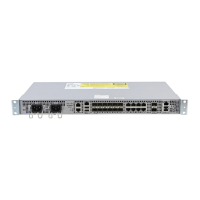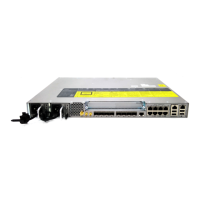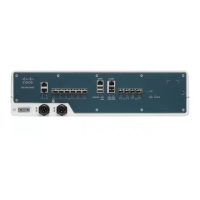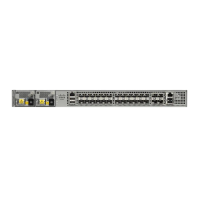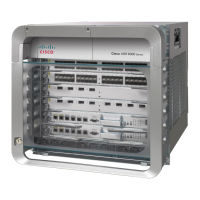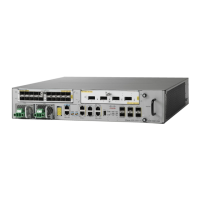Also, mapping profiles between DSCP or CoS and C-CoS or S-CoS should be the same across all ethernet
flow points (EFPs).
•
Egress classification and queuing is based on DSCP or CoS.
Ethernet Virtual Connections
You use the ethernet evc evc-id global configuration command to create an Ethernet virtual connection (EVC).
The evc-id or name is a text string from 1 to 100 bytes. Entering this command puts the device into service
configuration mode (config-srv) where you configure all parameters that are common to an EVC.
In this mode you can enter these commands:
• default—Sets a command to its defaults
• exit—Exits EVC configuration mode
• no— Negates a command or sets its defaults
• oam—Specifies the OAM Protocol
• uni—Configures a count UNI under EVC
Service Instances and EFPs
Configuring a service instance on a Layer 2 port or EtherChannel creates a pseudoport or Ethernet flow point
(EFP) on which you configure EVC features. Each service instance has a unique number per interface, but
you can use the same number on different interfaces because service instances on different ports are not related.
If you have defined an EVC by entering the ethernet evc evc-id global configuration command, you can
associate the EVC with the service instance (optional). There is no default behavior for a service instance.
Use the service instance number ethernet [name] interface configuration command to create an EFP on a
Layer 2 interface or EtherChannel and to enter service instance configuration mode. You use service instance
configuration mode to configure all management and control date plane attributes and parameters that apply
to the service instance on a per-interface basis.
•
The service instance number is the EFP identifier, an integer from 1 to 4000.
•
The optional ethernet name is the name of a previously configured EVC. You do not need to enter an
EVC name, but you must enter ethernet. Different EFPs can share the same name when they correspond
to the same EVC. EFPs are tied to a global EVC through the common name.
When you enter service instance configuration mode, you can configure these options:
• default—Sets a command to its defaults
• description—Adds a service instance specific description
• encapsulation—Configures Ethernet frame match criteria
• ethernet—Configures Ethernet-lmi parameters
• exit— Exits from service instance configuration mode
• ip—Interface Internet Protocol config commands
Carrier Ethernet Configuration Guide (Cisco ASR 920 Series)
14
Ethernet Virtual Connections Configuration
Ethernet Virtual Connections

